Discover the art of protective hairstyles for relaxed hair. From understanding the relationship between hair texture and suitable styles to the benefits of safeguarding your hair’s ends, we explore how protective styles foster growth and vitality.
Dive into expert tips, style recommendations, and strategies for maintaining hair health during transitions and seasonal changes. Explore the delicate balance between style and protection for your relaxed tresses.
Hair Texture & Protective Hairstyle Compatibility
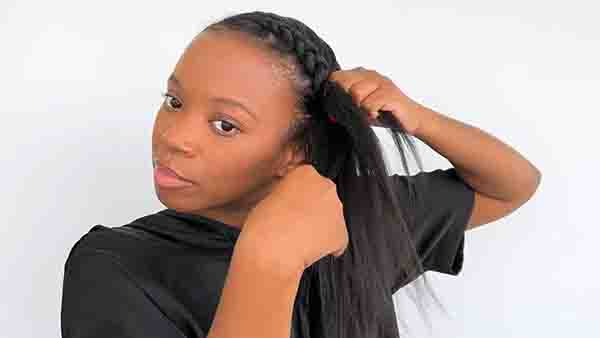
Hey there! So, hair texture is all about your hair’s natural state – think straight, wavy, curly, or coily. Plus, a fine texture means thinner strands, and a coarse texture means thicker strands.
Your hair texture hugely influences the type of hairstyles that best suit you. This is all because of factors like volume, manageability, and the level of stress on your hair strands.
Imagine you’ve got relaxed hair, which means it’s been chemically processed to be straight. Protective styles, like braids or twists, can be a key option for you. These styles focus on reducing damage while promoting growth, but your choice should be consistent with your hair texture. If your texture is coarse, chunkier braids might be your best bet.
Protective Styles: Essential for Relaxed Hair Health
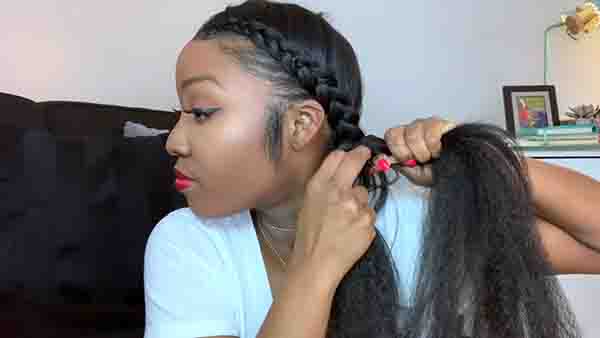
Protective hairstyles are a vital tool in maintaining the health of your relaxed hair.
Opting for protective hairstyles secures the end of your hair, reducing the risk of split ends and damage.
Remember, relaxed hair is chemically treated, making it more exposed to harm. Minimal manipulation through protective styles can help maintain its condition.
For example, braids, twists, or buns can extend the longevity of your relaxed hair by lessening physical strain.
You’ll not only maintain condition, but also promote healthier growth.
Preserving Relaxed Hair Ends
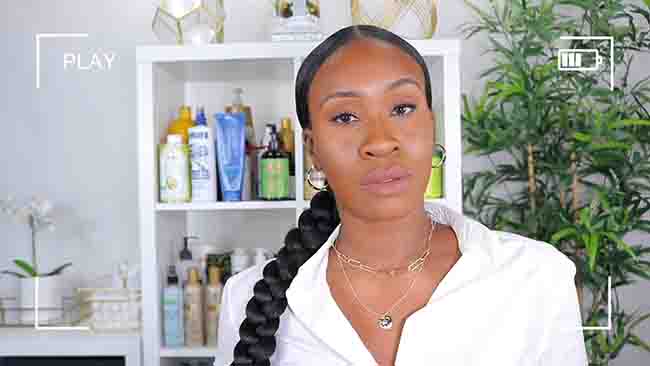
Why focus on protecting the ends of your relaxed hair, you ask?
Well, consider this – the ends are the oldest, most fragile parts that are a tad shy of breakage. What’s the trick to keep them hale and hearty?
- Step right into the world of protective hairstyles.
- These styles cleverly tuck those fragile ends away, creating a happy shield against rough friction and harsh exposure.
- The result? Healthier, stronger hair.
- Expert tip: Try braids or buns to deal with those fragile ends. They’re trendy and efficient.
Remember, your hair’s wellness depends much on how you care for those ends. So gear up and let’s get protecting.
Gentle Roots: Choosing Protective Styles for Relaxed Hair
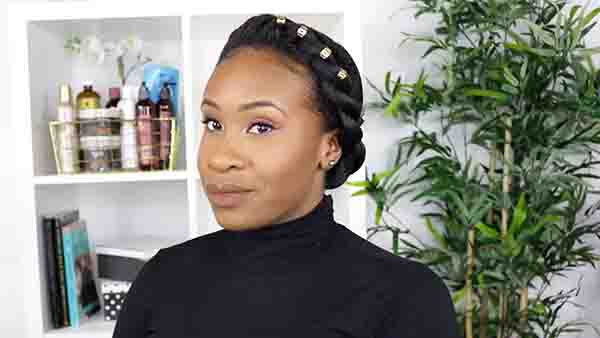
We get it, you want to keep your hair in top condition, but did you know your protective style could be causing harm?
Yes, the strain on hair roots can lead to traction alopecia, a condition where hair is pulled out from its roots from continuous stress. And trust me, for chemically relaxed hair, this could be a serious concern.
You see, minimizing strain on your roots is important when choosing protective hairstyles. For relaxed hair, protective styles should not put undue strain on already fragile roots.
Low-tension buns or loose braids; these styles can prevent potential breakage. So, thoughtful choice of hairstyles can help keep your beautiful hair healthy and vibrant. Remember, your hair is delicate, treat it kindly.
Popular, Not Always Protective: Drawbacks of Chunky Styles for Relaxed Hair
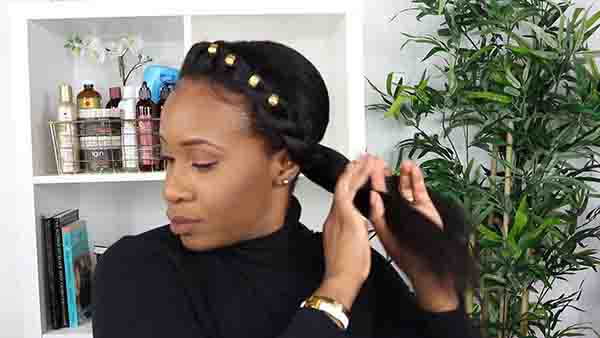
Feeling disappointed? It’s understandable. Long chunky/jumbo braids, faux locs, and chunky long twists certainly appear alluring, but they may not be the best for your relaxed hair. Here’s why:
- The weight! Heavy extensions increase tension, straining your hair roots and shaft.
- The vulnerability! Chemically treated, relaxed hair is more susceptible to breakage, thus not making these styles protective.
The extreme popularity of these hairstyles doesn’t negate their potential harm for your relaxed hair.
Sure, they’re stylish, but remember, health should always come before beauty. Protect your delicate tresses and opt for styles that truly shield, not stress, your hair.
Understanding Cuticle Restructuring in Relaxed Hair

“Cuticle restructuring” in relation to relaxed hair denotes the adjusting of hair cuticles affected by chemical straightening processes.
- Chemically relaxed hair can jeopardize cuticle integrity, requiring effective restructuring.
- It’s pivotal to consider this when selecting protective hairstyles; a style that causes minimal stress to the cuticles ensures hair health.
- For instance, loose braids can aid in cuticle restructuring as they apply less tension.
Remember, hair longevity relies on cuticle integrity.
Advantages of Quick Relaxing Hair Care at Home and During Sleep
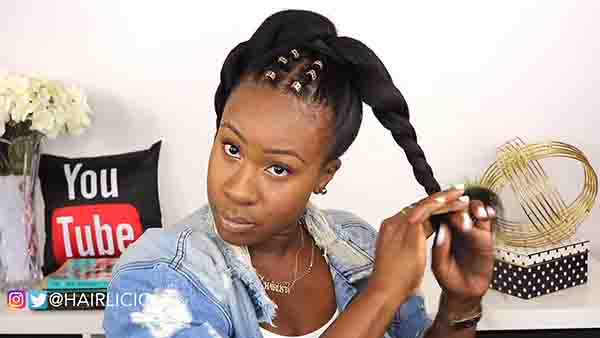
Protecting your relaxed hair, especially at home and during sleep, is more straightforward than you might think.
The easiest and fastest method, which involves shielding your locks from damage caused by home environments, offers a myriad of benefits.
- Reduction in hair breakage risk
- Minimization of hair damage
- Enhanced overall hair health
- Promoting longer and stronger hair growth
Exposure to friction caused by pillows, bedding, and clothing will be a thing of the past.
Exploring the Timeless Appeal of Classic Protective Hairstyles
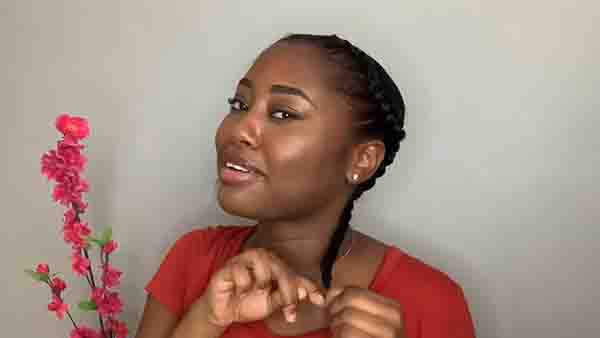
Do you love your relaxed hair and want to protect it? Classic protective hairstyles might just be your go-to.
They’re immensely popular due to their low maintenance and hair-shielding properties against harsh external elements.
Imagine sporting pretty braids, twists, or bouncy buns – not only do they minimize manipulation (a big win for relaxed hair), but they also have myriad benefits.
These styles safeguard your hair’s health, lock in moisture, and avoid breakage, making them ideal for your relaxed tresses.
Trust us, your hair will thank you for embracing these timeless protective styles.
Root-Friendly Long-Term Protective Styles for Relaxed Hair
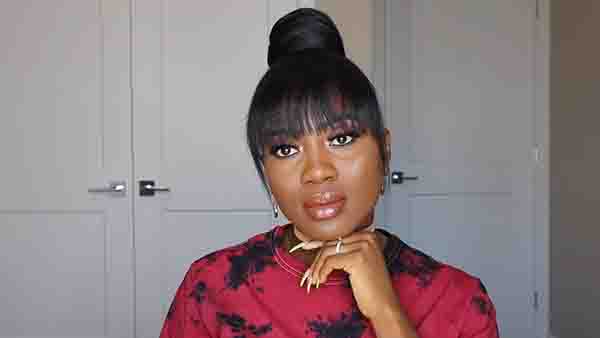
Definitely! You can undeniably do protective styles on relaxed hair. There are numerous styles out there that not only look great but are specifically designed to protect your relaxed strands.
- Box-braids: These are individual plaits that don’t stress the roots. They work well with relaxed hair because they cover the hair comprehensively, shielding it from damage.
- Crochet braids: These braids include hidden natural hair. They are ideal for relaxed hair because they require less manipulation, effectively minimizing breakage.
- Wigs or hair extensions: These cover your complete hair, providing an all-inclusive shield from potential harm.
Protective styles like these surely offer ideal options for safeguarding your relaxed hair.
Goddess Braids, Passion Twists, and the Secure Harmony of Butterfly Locs for Relaxed Hair
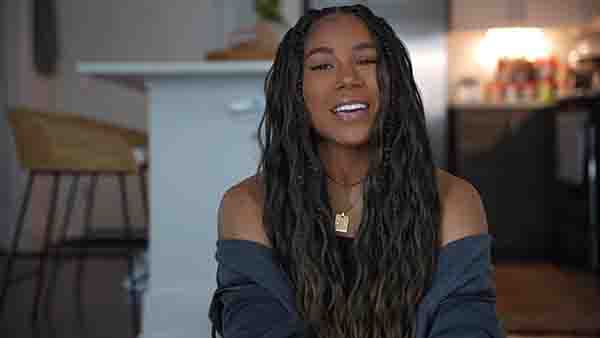
Goddess braids feature flat, close-to-scalp cornrows, while passion twists employ extensions for twisted sections. The Butterfly locs style merges these, offering a secure choice for relaxed hair.
Passion twists’ extensions add volume, lessening strain on natural hair. Their fusion in Butterfly locs balances weight distribution, aiding in hair protection, especially for relaxed hair prone to fragility.
This blend harnesses both styles’ advantages, crafting a safer option that marries protection and style for those with relaxed hair.
Factors for Butt-Length Braids and Root Tension on Relaxed Hair
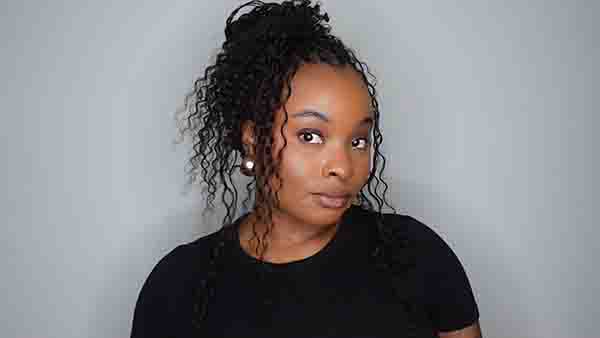
When contemplating butt-length braids, factoring in root tension and hair weight is vital. Excessive tension strains roots, risking breakage.
Heavy hair can stress follicles, leading to weakening. This is crucial for relaxed hair, susceptible to damage.
Prioritizing a manageable weight-to-length ratio and gentle root handling is essential.
Balanced tension safeguards hair health, while mindful weight distribution minimizes strain.
Delicate care is pivotal, particularly for relaxed hair, ensuring the chosen butt-length braids promote strength and vitality while preventing potential harm.
Decoding the ‘Pop Smoke Braids

The “Pop Smoke Braids” style is characterized by its intricate pattern of small, raised braids that imitate the late rapper Pop Smoke’s distinctive hairstyle.
This technique involves creating numerous mini-braids on the scalp, distributing the weight of extensions evenly across the head.
Unlike traditional box braids that exert direct tension on roots, Pop Smoke Braids’ raised pattern alleviates this stress.
The extensions are skillfully integrated into the small braids, preventing them from directly pulling on the relaxed hair.
This innovative approach minimizes the risk of breakage and hair damage that often accompanies heavier styles.
By dispersing the weight across multiple points, the style achieves a protective balance between aesthetics and hair health, making it an appealing option for individuals with relaxed hair seeking a stylish and safe choice.
Coi Leray Braids as a Dual-Function Protective Style
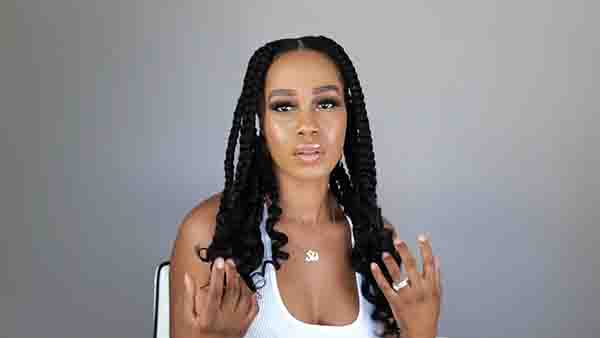
The “Coi Leray Braids” hairstyle offers a dual advantage for relaxed hair.
As a protective style, it involves creating small, tension-relieving braids across the scalp, which shield the hair from external stressors and reduce manipulation.
These braids prevent direct tension on the relaxed hair, promoting health and minimizing breakage.
What sets this style apart is its transformation into wavy curls upon unraveling. The initial braids induce a mild wave pattern due to their structure.
Upon taking out the braids, the hair retains this wave memory, resulting in effortless wavy curls.
This innovation provides a long-term protective option while offering a stylish post-style outcome.
By combining protective measures with an adaptable and charming result, the “Coi Leray Braids” hairstyle caters to the needs of relaxed hair, emphasizing both preservation and aesthetics.
Mini Twists: Perfect Protective Choice for Short Relaxed Hair
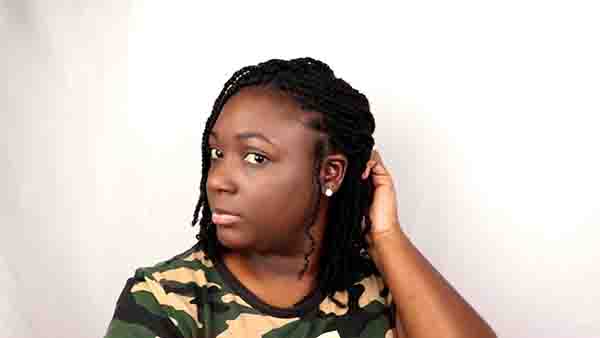
The “Mini Twists” hairstyle involves creating small, twisted sections of hair, often using the two-strand twist method.
This style offers versatility, and manageability, and is particularly well-suited for shorter relaxed hair.
The smaller twists prevent excessive weight and tension on delicate strands.
The twists help in preserving moisture by reducing the hair’s exposure to environmental factors. This style requires minimal manipulation, minimizing breakage and aiding in hair health.
Additionally, “Mini Twists” can be worn as a protective style, shielding the ends from friction and damage.
Due to its scale, this style maintains its neat appearance even with shorter hair, making it an excellent choice for those with relaxed hair seeking a stylish, low-stress option that promotes hair strength and growth.
Twists on natural hair compared to applying them to relaxed hair?
When creating twists, adapting for natural and relaxed hair involves recognizing their distinct needs.
Natural hair is typically coarser and has more texture, making it easier to grip for twisting.
For relaxed hair, which is chemically treated and often finer, a lighter touch during twisting is essential to prevent breakage.
The twist size matters too – smaller twists are often better for relaxed hair, ensuring even distribution of tension.
Furthermore, relaxed hair may benefit from extra moisture and gentle handling, as it’s more susceptible to dryness and damage.
Protective styles like twists can shield both hair types, but relaxed hair requires extra care to avoid over-manipulation.
Ultimately, while twists are versatile for various hair textures, adapting the technique to suit relaxed hair involves a nuanced approach that prioritizes its specific fragility and care needs.
At-Home Buns
Crafting buns at home for both natural and relaxed hair involves tailored techniques.
For natural hair, consider using a leave-in conditioner to enhance manageability and control frizz before gathering the hair into a high, medium, or low bun. Use a hairband or pins to secure.
For relaxed hair, start with smoothed hair, using a light oil or cream to minimize flyaways. The key is gentleness – avoid excessive pulling or tugging due to relaxed hair’s increased fragility.
Secure the bun with pins or hair-friendly accessories, ensuring not to stress the roots.
While both hair types follow a similar bun concept, natural hair might embrace its texture for a fuller look, while relaxed hair prioritizes sleekness.
Adapting the process according to each type’s needs ensures successful and protective bun styling at home.
Enhancing Twisted Hairstyle Longevity for Relaxed Hair
Relaxed hair’s smoother texture and reduced natural coil can lead to easier unraveling of twists compared to natural hair. This is because the twists might have less texture to grip onto.
To enhance the longevity of twisted hairstyles on relaxed hair, certain strategies can be employed.
Prepping the hair with a lightweight styling product or leave-in conditioner can provide grip and hold.
Twisting smaller sections can also improve the twists’ grip on the hair. Adding a small amount of gel or cream to the ends before twisting helps prevent them from unwinding. Using smaller perm rods or flexi-rods at the ends can anchor the twists.
Incorporating these techniques can help counteract relaxed hair’s tendency to unravel, promoting the longevity of twisted hairstyles.
The key is to create a balance between adding texture and using products to enhance hold without causing damage to the relaxed hair.
Flexi-Rod Sets: Seamlessly Blending New Growth with Relaxed Ends
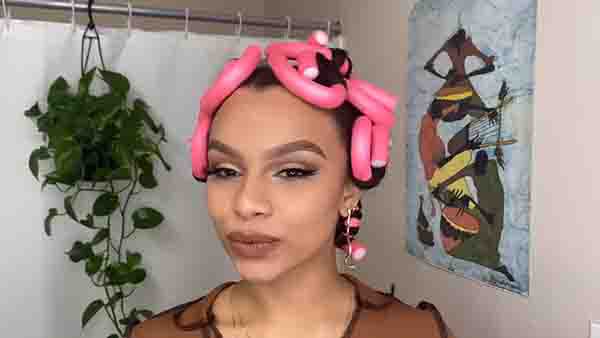
Flexi-rod sets are valuable for blending new hair growth with relaxed ends during transitioning.
The process entails wrapping the hair around flexible rods, creating uniform curls that smoothly integrate textures.
As new growth is softer and curlier, the flexi-rods help create a cohesive look, camouflaging the contrasting textures.
Advantages of flexi-rod sets encompass both aesthetics and hair health. The style achieves a harmonious appearance, making the demarcation line less noticeable.
Furthermore, flexi-rods set without direct heat exposure minimize damage. The curls also help prevent tangling and breakage associated with transitioning hair, promoting length retention.
In terms of hair health, the lack of heat and the added curls enhance moisture retention, vital for both relaxed and natural portions.
Overall, flexi-rod sets stand as a protective and aesthetically pleasing solution, promoting a smoother transition while maintaining hair health.
Tension-Inducing Extension Styles
Certain protective hairstyles with extensions can inadvertently strain the scalp and harm relaxed hair.
Box braids, for instance, involve tightly braiding extensions into the natural hair, creating tension at the roots. This tension can lead to hair thinning, breakage, and even traction alopecia, a condition where hair is pulled out from the follicle due to excessive stress.
Similarly, micro braids, where tiny sections are intricately braided, can also cause tension-related issues.
Weaves, while offering versatility, can place significant weight on the scalp. The tight sewing or gluing of tracks can result in hair follicle stress and thinning over time, particularly if not properly maintained.
Cornrows with added hair, often used as a base for other styles, can cause damage due to the weight of the extensions pulling on the natural hair.
Risks of Tight-Braided Styles
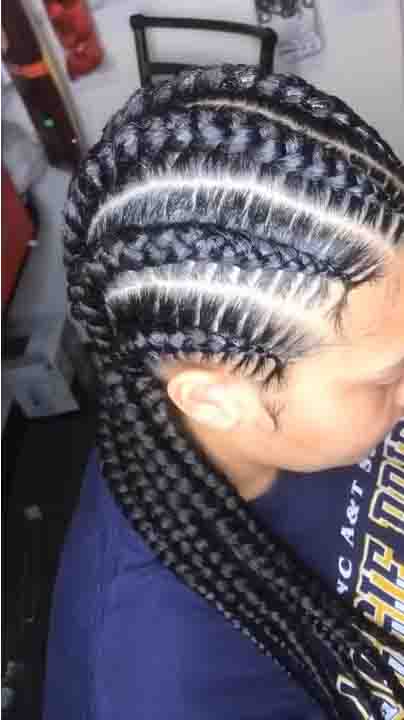
Excessive tension and damage to the roots of relaxed hair, caused by tight and heavy braided hairstyles, can lead to a range of negative consequences that impact overall hair health.
Traction alopecia is a significant risk, where constant pulling from tight braids weakens the hair shaft, leading to hair loss around the hairline and scalp edges.
The strain on the follicles can impede proper blood circulation, affecting nutrient supply and hindering hair growth.
Damage to the roots can weaken the hair’s structural integrity, making it more susceptible to breakage and split ends.
The trauma to the hair follicles may also result in inflammation and scarring, further hindering new hair growth. In severe cases, repeated tension and damage can cause permanent hair loss in affected areas.
The overall health of the hair is compromised as weakened roots are less able to support healthy hair growth.
Hair becomes more brittle, lacks vitality, and experiences stunted growth. Opting for looser, gentler protective styles that distribute weight evenly across the scalp is crucial to preventing these consequences and maintaining the strength and health of relaxed hair.
Promoting Growth: Protective Hairstyles as a Respite for Relaxed Hair from Elements
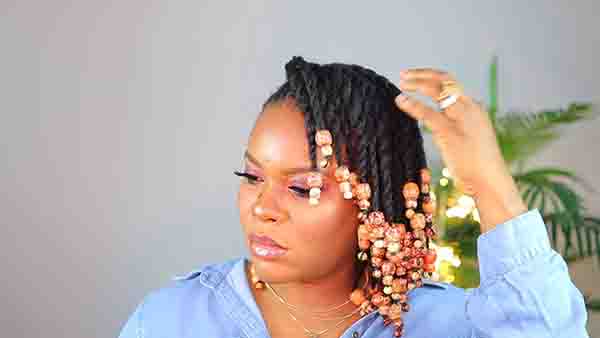
Protective hairstyles act as a shield for relaxed hair, safeguarding it from external elements such as weather, friction, and styling tools.
By minimizing exposure to these stressors, these hairstyles create an environment conducive to hair growth.
Reduced manipulation required for maintaining protective styles means decreased risk of breakage and damage.
The hair retains its natural oils and moisture, vital for healthy growth, as there’s less interference. Moreover, protective styles often involve securing the ends, preventing split ends from worsening.
These styles also distribute the hair’s weight evenly across the scalp, diminishing tension on follicles and ensuring adequate blood circulation for nutrient supply.
As a result, protective hairstyles not only provide relief from damaging factors but also establish conditions that promote hair growth, making them a beneficial choice for relaxed hair care.
Summer Hair Care: How Protective Styles Shield and Sustain Relaxed Hair Health
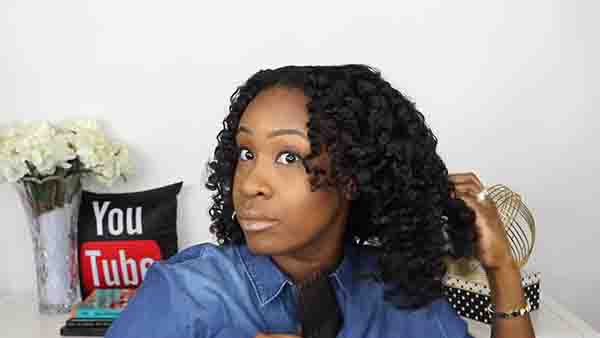
Shielding the hair from intense sunlight, UV rays, and humidity, protective styles prevent moisture loss and UV damage.
By reducing the need for constant styling, these hairstyles minimize breakage and manipulation, preserving hair health.
The style’s structure also keeps ends tucked away, combating split ends. Moreover, protective styles maintain the hair’s natural oils, essential for moisture balance.
During the summer, when heat and humidity are high, these advantages become paramount. Minimized exposure to harsh elements prevents frizz and dryness.
Less manipulation reduces stress on strands, protecting against breakage exacerbated by summer activities.
Overall, protective styling acts as a barrier against external aggressors, ensuring hair remains healthy, strong, and manageable throughout the demanding summer months.
Transitioning Hair Care: Overcoming Demarcation Line Challenges and Nurturing Fragile Strands
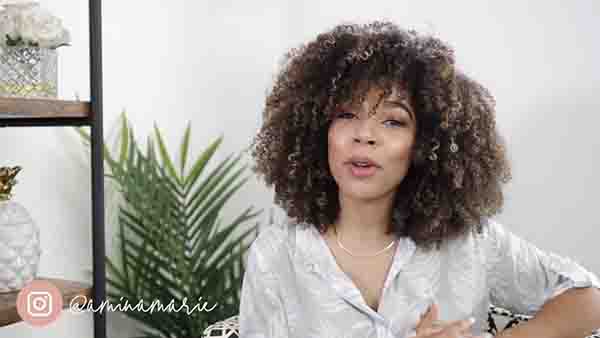
Transitioning hair, marked by the presence of two textures, often faces challenges at the demarcation line – where natural and relaxed hair meet. This area is fragile and prone to breakage due to the contrast in textures. To care for this delicate part:
- Gentle Handling: Avoid excessive manipulation, combing, or styling in this area to minimize stress.
- Moisture: Provide extra hydration using leave-in conditioners or moisturizing sprays to prevent dryness and brittleness.
- Protein Treatments: Regular protein treatments strengthen the demarcation line, reducing breakage.
- Low Manipulation Styles: Opt for protective styles like braids, twists, or buns that tuck the line away.
- Transitioning Techniques: Gradual trimming or “big chop” helps remove damaged ends, easing the transition.
- Avoid Heat: Minimize heat usage as it can further weaken the demarcation line.
By being mindful of the challenges and employing careful techniques, you can effectively manage the demarcation line, promoting healthier transitioning hair and successful texture change.
FAQ
Wait at least a week before braiding newly relaxed hair.
Yes, cornrows can be done on relaxed hair.
Wait around 2 weeks after relaxing to get a sew-in.
Aim for every 8-12 weeks to avoid excessive damage.
It’s not recommended to braid perm relaxed hair due to potential damage.
Yes, tight braids can damage straight hair.
A well-maintained relaxer can last 6-8 weeks.
